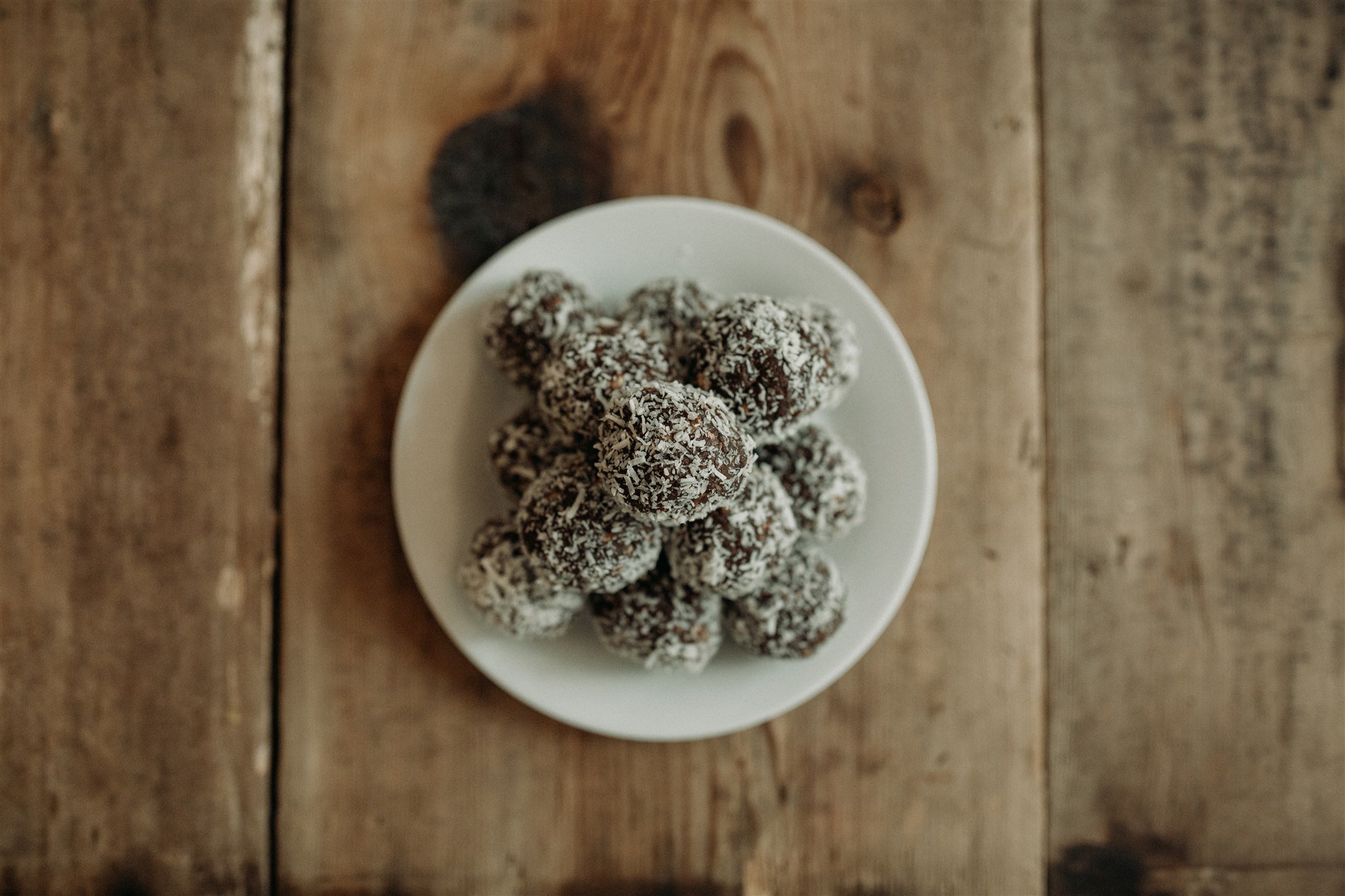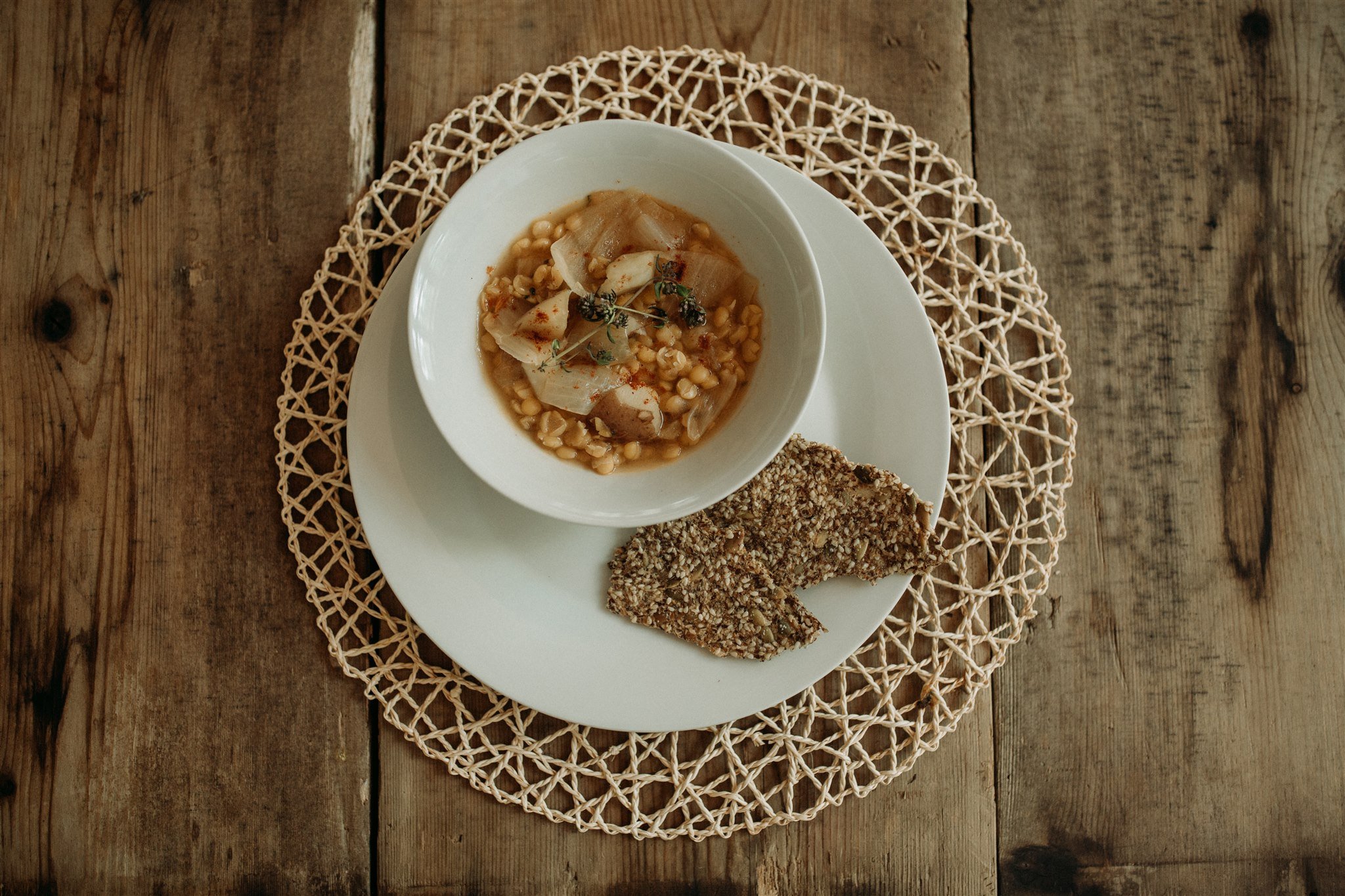The practice of Tapas within yogic tradition encompasses various dimensions of our lives. It includes the discipline of our physical bodies, through practices such as asana (yoga postures), pranayama (breath control), what we expose ourselves energetically to, and healthful lifestyle choices. It extends to the habits of our minds, where we cultivate mindfulness, focus, and the ability to observe our thoughts without being consumed or controlled by them. Tapas is something we cultivate as individuals as well as in community, such as on a creative, corporate, or movement retreat at Nectar Yoga on Bowen Island, BC.
Santosha: Cultivating Contentment in a Restless World
As we surrender ourselves to the observance of Santosha, we discover that contentment is not a destination to be reached, much like how Saucha is also not an arrival point, but a way of being—a way of embracing the fullness of life with hearts wide open. This practice may not make us immune to undesirable situations in our lives, but it can sweeten our perspectives, inner stories, and how we respond to the insatiable demands of our need for gratification. May contentment be part of what anchors us to ourselves, to each other, and to the divine presence that dwells within us and among us. In many ways, this is both a personal and community practice, something that can be cultivated at home, and also further amplified (or activated) at a nature retreat here at Nectar Yoga on Bowen Island, BC. There is something profoundly powerful when you are witnessed by others, and when you witness others cultivate Santosha with intention.
Saucha: Cultivating Clarity in Ancient Yogic Philosophy
The practice of Saucha extends to our relationship with the land. It means centering and learning from the Indigenous groups, such as the Coast Salish peoples, and traditional earth-relating cultures. It calls for mindful consumption, reducing waste, and living in harmony with animals, plants, air, waterways, and other elements in Nature. It means a return to living and consuming seasonally. By being conscious of our ecological footprint, we acknowledge that humans are here for a reason, and to not waste this opportunity to steward this Earth. Saucha reinvites us back to circular living.
The Three Doshas Defined By Ayurveda
There are three doshas described in Ayurveda: Vata, Kapha + Pitta
Knowing the details of the three doshas and what your Ayurvedic body type is can be so helpful in syncing your inner rhythms each season.
Originating more than 3000 years ago in India, Ayurveda, a natural system of medicine, is known as the sister science to Yoga. The term Ayurveda is derived from the Sanskrit words Ayur (meaning: life) + Veda (meaning: science or knowledge);
which translates to Knowledge of Life.
Ayurveda encourages lifestyle interventions and natural therapies to find balance between the body, mind, spirit, as well as the environment.
The dosha(s) within us become more predominant when we fall into the corresponding season in the year:
Pitta = Late Spring + Summer
Vata = Fall + Early Winter
Kapha = Late Winter + Early Spring
“Understanding the qualities of each of these seasons can help you reduce any adverse effects. Remember that your predominant dosha increases during the season it governs, so take care to choose foods and activities that will pacify and not aggravate it.” - Kathryn Templeton via Yoga International
Pitta Dosha | Ruled By The Elements Of Fire + Water
Seasonal Aspects
Pitta = Late Spring + Summer
Pitta season is composed of themes surrounding all that is oily, hot, light, spreading, liquid. This time of year can show up in the body as agitation, high digestive fire and skin irritations.
Our internal fire is burning just as brightly as the flora + fauna surrounding us, bursting into full growth. Naturally these are the seasons that usher us into our most energetic tendencies. The seeds we’ve consciously planted in the early spring are sprouting with life and to avoid feeling burnt out, it’s important to pause and allow moments to rest and cool down as the fiery energy pushes us to keep going.
Personality Attributes
The common traits of Pitta-dominant types are hot, sharp or penetrating, light, liquid, spreading, a little oily, and sour. This dosha is responsible for mentally digesting life experiences and biologically digesting food. Pitta is responsible for chemical and metabolic transformations.
“Mental [processing], sound judgment, and discernment are functions of balanced Pitta… Regarding transformation, Pitta governs the ability of the body to combust, or digest, the materials needed to bring warmth and color to the body. The body’s ability to maintain warmth and absorb sunlight as well as our ability to mentally digest our thoughts and emotions are governed by Pitta dosha.” - Kathryn Templeton
Yoga Asana Postures For Pitta Season
*(modify to suit your practice/body)
Adho mukha svanasana; downward facing dog
Janu sirsasana; seated head to knee pose
Pavanamuktasana; knee to chest pose
Janu Sirsasana; head to knee pose
Malasana; squat pose
Stay Nourished With
Watermelon
Coconut
Fig
Kale
Figs
Kale
Cilantro
Cabbage
Papaya
Raisins
Strawberries
Flax seeds
Almonds
Foods that help balance Pitta are sweet, bitter, and astringent in taste. Ayurveda recommends sweet, sour, salty, pungent, bitter, and astringent tastes for healthy digestion. Find a full list in detail HERE
Vata Dosha | Ruled By The Elements Of Air + Ether
Seasonal Aspects
Vata = Fall + Early Winter
Mirroring the traits of late Fall to Winter, Vata season is dry, cold, windy, rough, light and erratic. Excess Vata can lead to imbalance, which can look like dry skin, constipation, insomnia or general lack of focus.
During Vata season, make sure that you are getting quality sleep; specifically to fend off any restlessness in the mind or body. This is a time that will naturally support you to seek a clear rhythm and routine to stay on track, and leave time for self care like meditation, self-massage or quality cuddle time if your have a significant other or a pet.
Personality Attributes
Generally quick learners, spiritually perceptive and are happiest when in contact with nature and the outdoors. They have a heightened sense of touch and a fine appreciation for beauty. You might recognize them as having their head in the clouds and speaking very enthusiastically + rapidly.
Vata dominant individuals can be prone to feeling wired and stressed, and thrive when they have early, consistent bedtimes. They are creative, individuals who are also usually active, alert and restless, always planning a new task or goal.
Yoga Asana Postures For Vata Season
*(modify to suit your practice/body)
Adho mukha svanasana; downward facing dog
Janu sirsasana; seated head to knee pose
Supta matsyendrasana; supine spinal twist
Setu bandha; bridge pose
Vata energy can feel flighty and enthusiastic, to stay balanced it is a good idea to do slower yoga practices to balance it out.
Stay Nourished With
Dates
Sweet potato
Red lentils
Watercress
Avocado
Pistachios
Zucchini
Mustard greens
Cucumber
Walnuts
Sunflower seeds
Choosing foods which have the opposite effect such as heavy, moist, smooth, sticky, slow, warm, stable, salty, sour + sweet helps to maintain balance or bring excess Vata back into equilibrium. Find a full list in detail HERE
Kapha Dosha | Ruled By The Elements Of Earth + Water
Seasonal Aspects
Kapha = Late Winter + Early Spring
While the weather and temperature may be cold and muddy, plants and animals are coming to life as winter moves towards spring. Looking to nature for direction on where to go with your own decisions always offers potent lessons. Mimicking the flora and fauna as seedlings are nurtured and ready to grow is a sound way to stay balanced during Kapha season, whether this is your predominant dosha or not. If you’re not already involved in an active lifestyle, this is a great time for you to change some habits and incorporate more movement into your routines; otherwise, the cold and wetness in your environment may lead you towards increased sedentary ways.
Wearing bright, warm colors during this time of year and diffusing scents such as eucalyptus, sage, and rosemary can offer a boost to your day. You can also balance your Kapha dosha with a daily dry massage known as a Garshana.
Kapha season is the time to go deeper into any sort of exercise program with specific attention placed on movement. When left untended Kapha tends towards stagnation and heaviness if it is not properly invigorated.
Personality Attributes
Kapha-dominant individuals are naturally compassionate, patient + calm. In the physical body, they have strong cognitive function and their joints are typically well-lubricated.
These people are prone to exhibiting physical and mental characteristics that carry the attributes of moist, cold, heavy, dull, soft, sticky, and static.
The key to balancing Kapha is stimulation.
Yoga Asana Postures For Kapha Season
*(modify to suit your practice/body)
Vajrasana; thunderbolt pose
Marjaryasana/Bitilasana; cat + cow pose
Surya Namaskar B; sun salutations
Virbhadrasana 2 (warrior 2)
Trikonasana (triangle pose)
Vrksasana (tree pose)
Stay Nourished With
Cloves
Cinnamon
Juniper
Okra
Black beans
Pumpkin seeds
Berries
Wild rice
Spinach
Peppers
Ayurveda teaches that Kaphas should eat foods with pungent, bitter, and astringent tastes. Foods with sweet, sour, and salty tastes should be minimalized as well as raw food. Find a full list in detail HERE
Gratitude to our community near and far, both for taking the time to explore our blog and for walking the path to your best self - we hope this resonated and aids you in finding balance within.
Extra thanks to Bayan Botanicals + Kathryn Templeton for the extra knowledge and resources surrounding the subjects above.
All Photos - Nectar Yoga Copyright





























